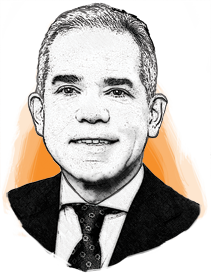May 11, 2017 PAO-M05-17-NI-012
Researchers at Sanford Burnham Prebys (SBP) Medical Discovery Institute have identified a previously unknown step in the muscle regeneration process that involves stem cells that are permanently inactive in older people.
These stem cells are generally in a resting state in adults and do not participate in the creation of new muscle fibers, according to Lorenzo Puri, M.D., Ph.D., a professor in SBP’s Development, Aging and Regeneration program. Because these resting cells want to remain stem cells, they do not express the protein MyoD, which is important for muscle differentiation. If properly activated, however, the stem cells will express MyoD and become a specific type of muscle cell.
In older adults, the cells become permanently inactive (senescent) and cannot be activated. In addition, Puri and his team learned that older muscle stem cells can spontaneously cause a DNA damage response (DDR). When this response occurs because there is actual DNA damage, the DNA is repaired and the response signal is halted. With older muscle stem cells, however, because there is actually no damaged DNA, there is nothing to halt the DDR signal. This DDR activity is what prevents the production of MyoD and any further muscle cell differentiation.
With this new understanding of the reason why older muscle cells do not regenerate, the researchers sought to identify an approach for overcoming the undesired DDR response. They were concerned, however, that new muscle cells generated by older muscle stem cells could result in the formation of muscle containing genetic abnormalities or that lacks full functionality. They do think, however, that it may be possible to slow muscle mass degradation and thus maintain healthier muscles with aging.
“There is no way to have an 80-year-old man or woman [regain] the muscle of his or her youth. But we can preserve as much as possible their locomotion and metabolic function, to age in as healthy a way as possible,” Puri observes. Opportunities for aiding patients suffering from the “accelerated aging” associated with muscular dystrophy may be greater, however. The researchers are currently seeking to identify the connection between the role of MyoD in the activation of stem cells and the lack of dystrophin protein that occurs with this disease.

Guy supports the success of life science organizations by identifying synergies across research, content, marketing and communications resources to drive value for clients. With over 30 years of education and marketing experience and 18 years in the life sciences alone, Guy leads our editorial standards for client content, Pharma’s Almanac and Nice Insight research-based industry content as well as external communications for clients. Having served as head of global marketing and communications for a CMO, he also brings critical insight and guidance to all communications. Guy holds a Masters degree from Columbia University.